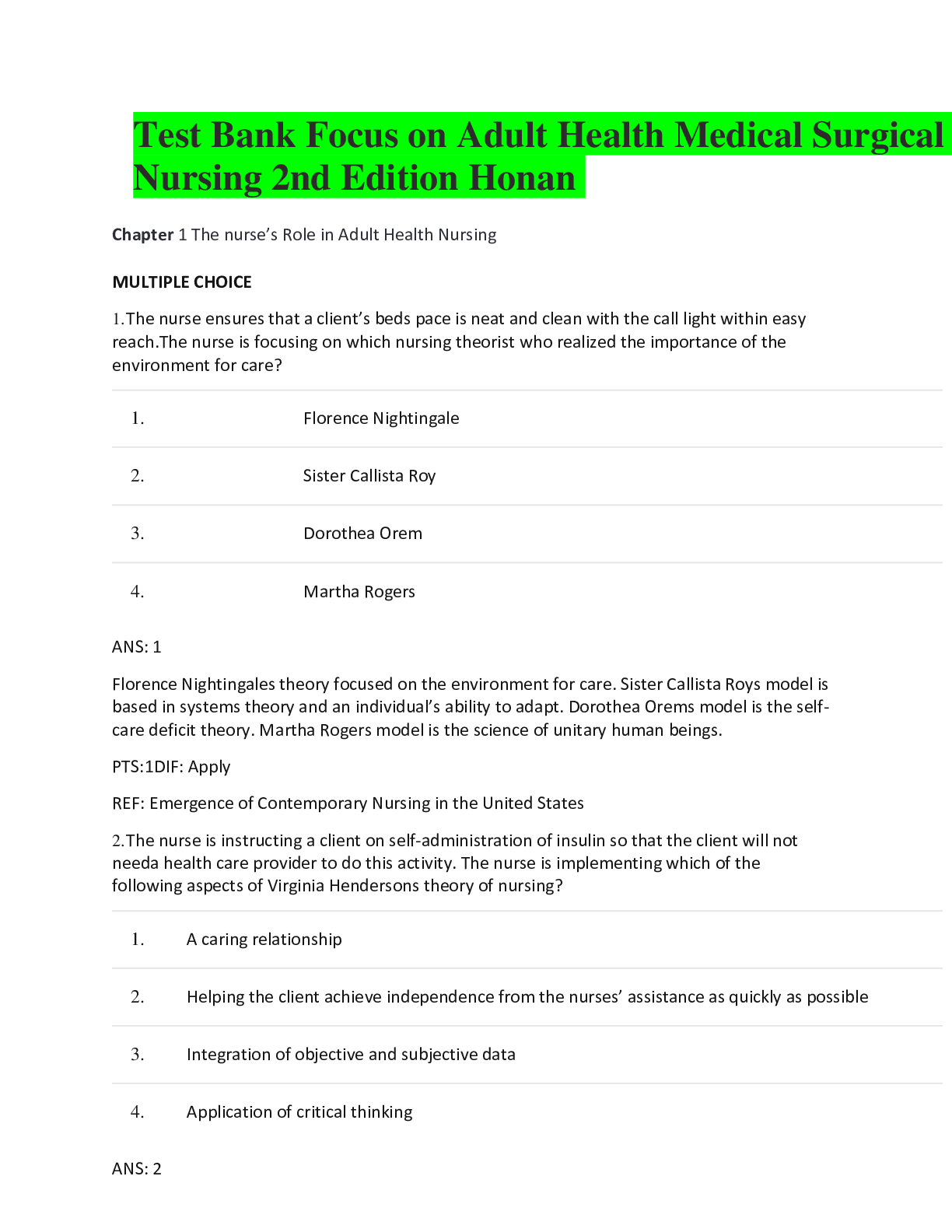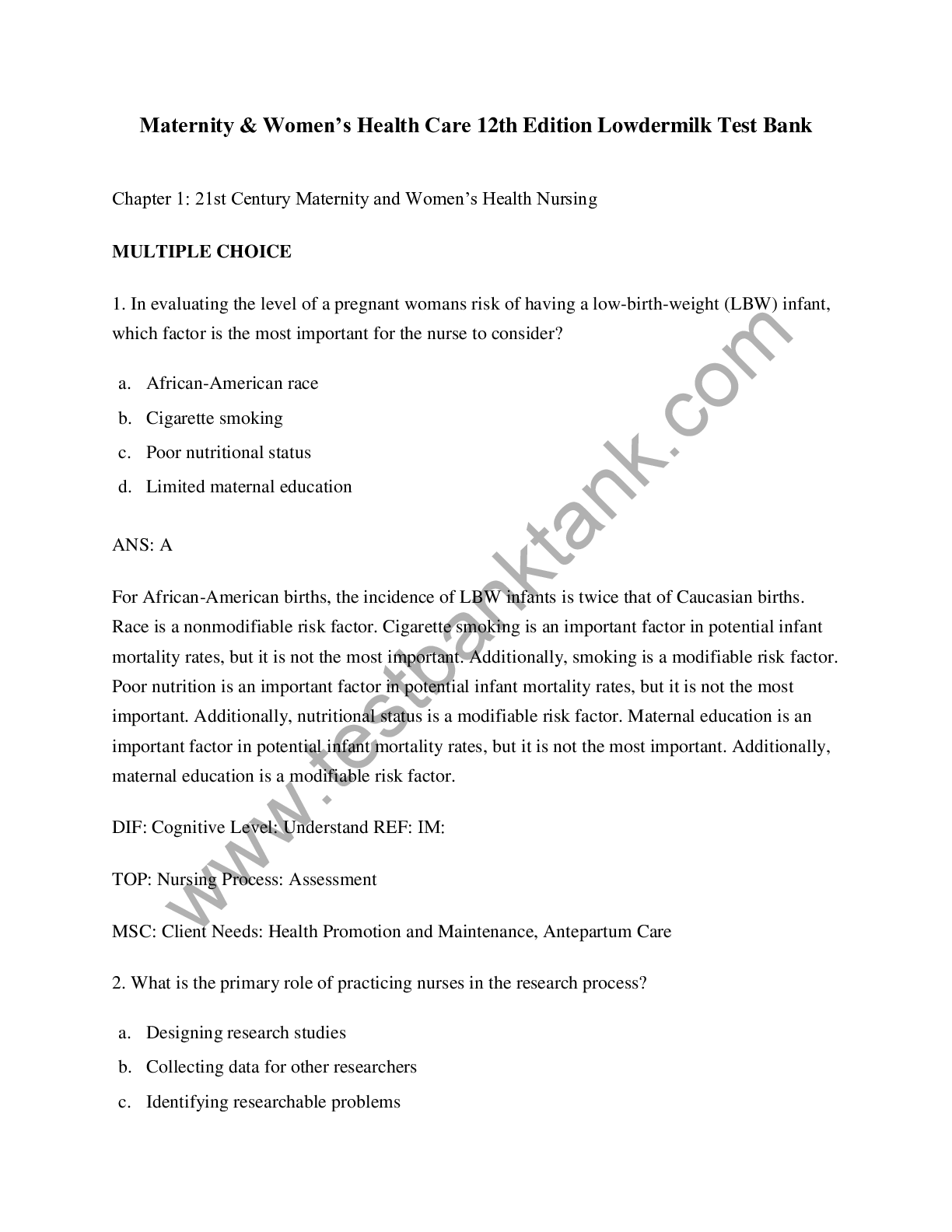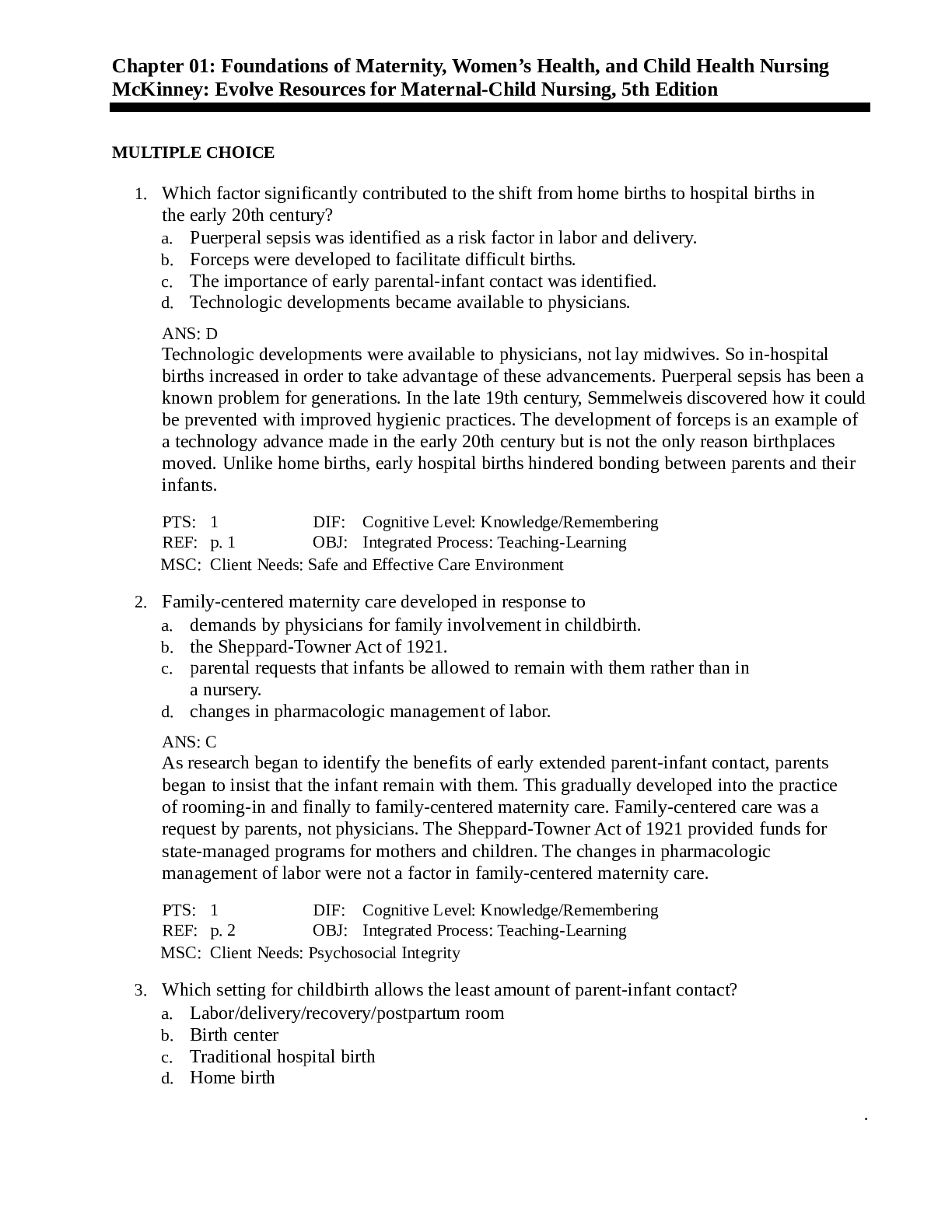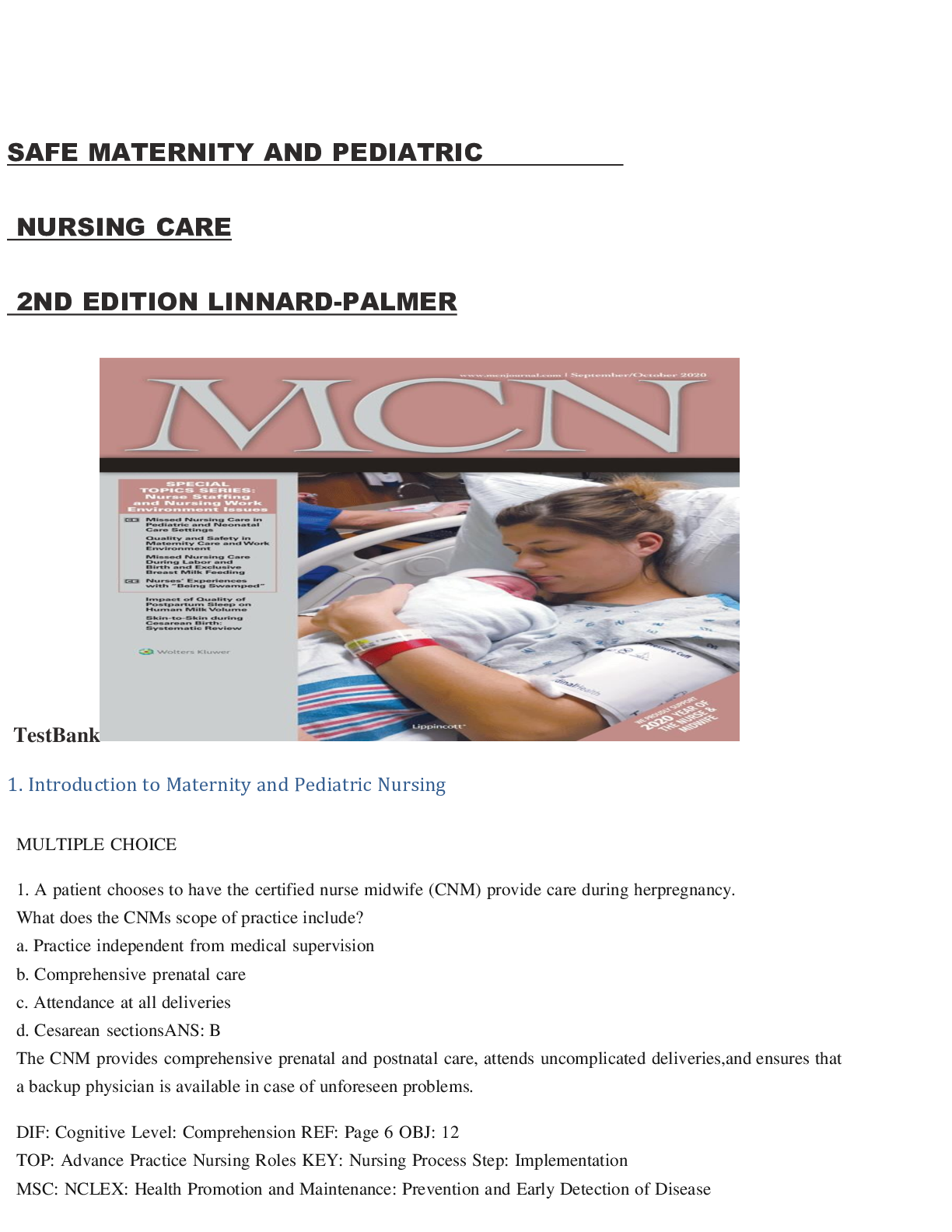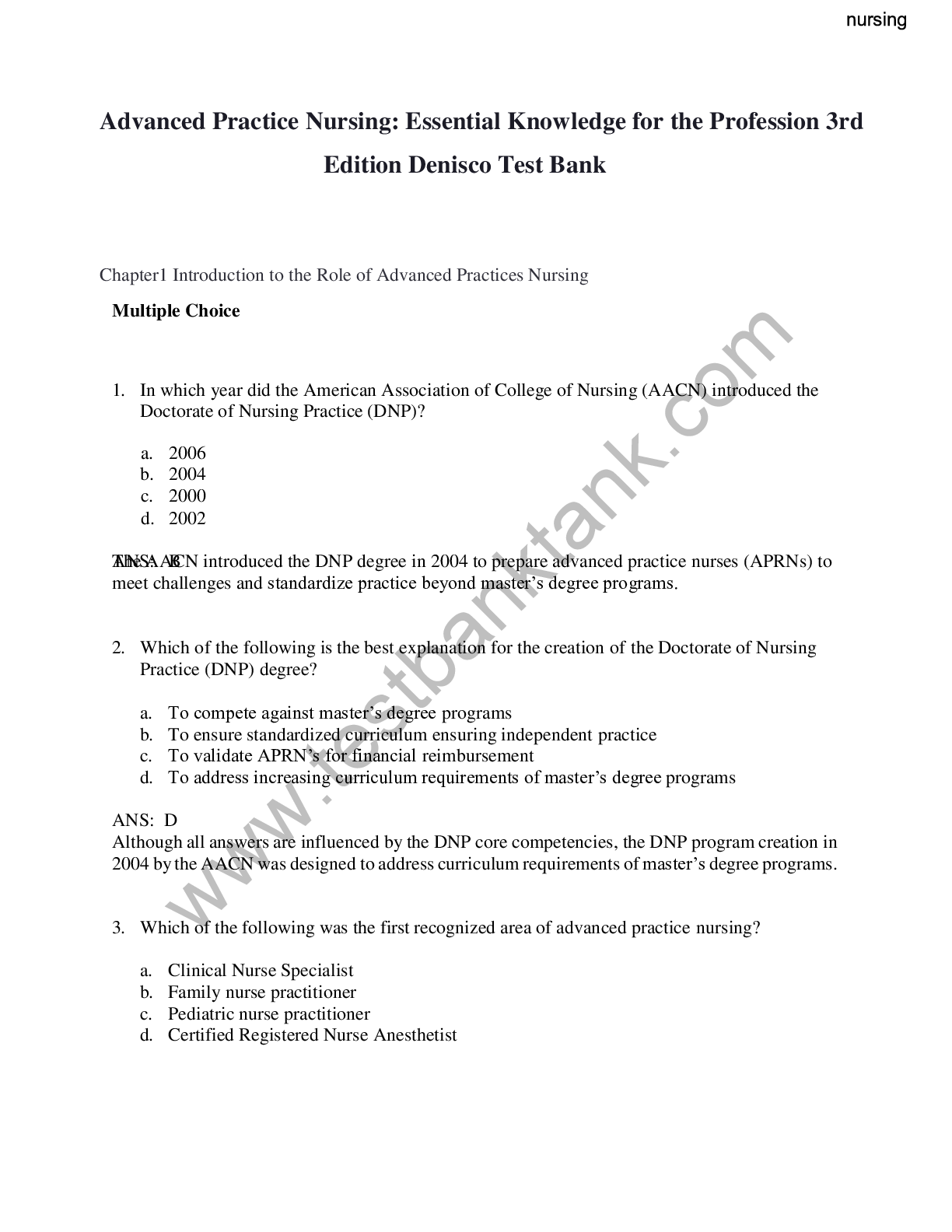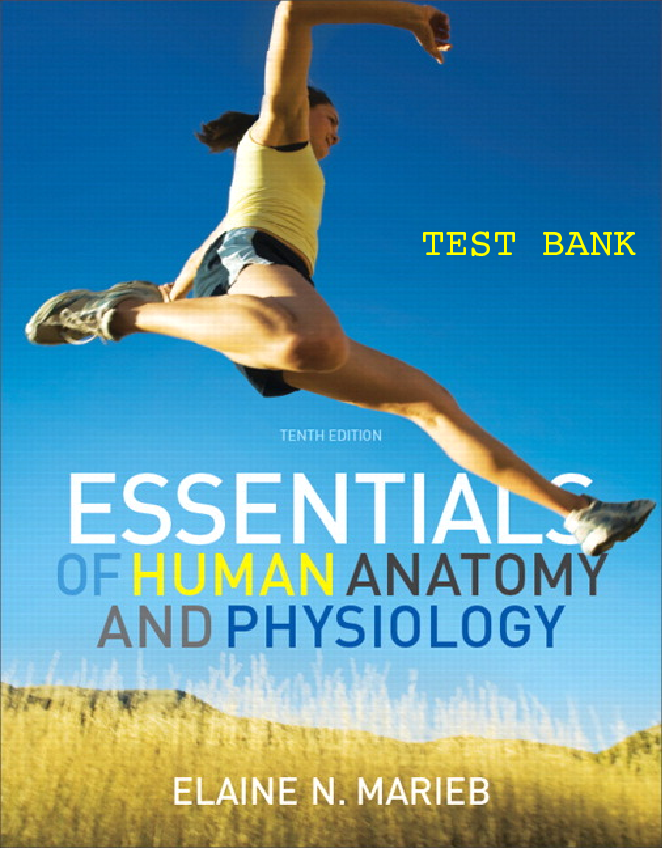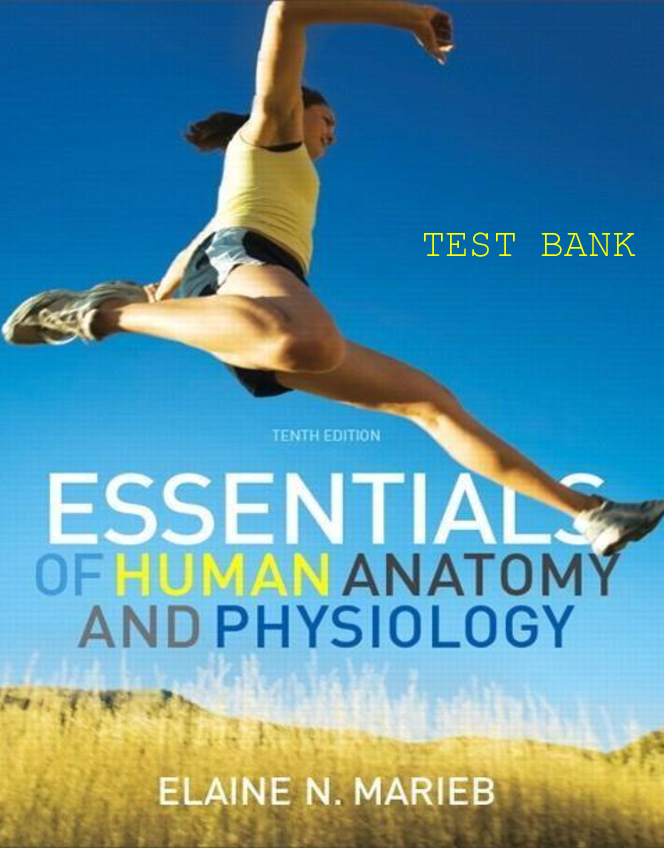*NURSING > TEST BANKS > Test Bank for: Essentials of Human Anatomy Physiology 10E by Elaine N. Marieb All Chapters (All)
Test Bank for: Essentials of Human Anatomy Physiology 10E by Elaine N. Marieb All Chapters
Document Content and Description Below
1) A section that divides the body on the longitudinal plane into equal right and left parts is called: 1) A) median (midsagittal) B) oblique C) transverse D) frontal E) coronal 2) Whic... h of the following is the correct sequence, going from simplest to most complex, in the levels of structural organization of the human body: A) chemical level, tissue level, cellular level, organ system level, organ level, organismal level B) cellular level, chemical level, tissue level, organ system level, organismal level, organ level C) chemical level, cellular level, tissue level, organ level, organ system level, organismal level D) cellular level, chemical level, tissue level, organ level, organ system level, organismal level E) cellular level, tissue level, chemical level, organ level, organ system level, organismal level 2) 3) Which of these regions are associated with the parts of the arm: 3) A) femoral, popliteal, patellar B) brachial, antecubital, carpal C) nasal, oral, occipital D) pelvic, pubic, inguinal E) acromial, sacral, gluteal 4) The muscular system consists of the: 4) A) muscles in the walls of hollow organs B) muscles of the heart and those in the walls of the hollow organs C) skeletal muscles D) skeletal muscles and the muscles of the heart E) muscles of the heart 5) The lymphatic system: 5) A) synthesizes vitamin D B) responds to internal and external changes by activating appropriate muscles and glands C) secretes hormones that regulate processes such as growth, reproduction, and nutrient use (metabolism) by body cells D) picks up fluid leaked from blood vessels and returns it to the blood E) produces heat 6) Which system covers the external surface of the body and manufactures vitamin D: 6) A) endocrine system B) skeletal system C) nervous system D) integumentary system E) lymphatic system 7) Which of these regions are NOT associated with the ventral (anterior) portion of the head: 7) A) oral B) orbital C) buccal D) nasal E) occiptal 8) Which of the following systems is matched most accurately to the life function it provides: 8) A) respiratory system - digestion B) nervous system - excretion C) muscular system - maintaining boundaries D) integumentary system - movement E) nervous system - responsiveness 9) Which of the following elements of a control system detects a change: 9) A) receptor B) control center C) effector D) stimulus E) efferent pathway 10) Which of the following statements is correct regarding the location of the spleen and stomach: 10) A) both of these organs are located medially B) both of these organs are located in the left upper quadrant C) the spleen is located in the left upper quadrant and the stomach is located in the right upper quadrant D) both of these organs are located in the right upper quadrant E) the spleen is located in the right upper quadrant and the stomach is located in the left upper quadrant 11) Which of these is NOT a survival need: 11) A) oxygen B) water C) reproduction D) body temperature E) nutrients 12) Which of the following is the correct order of elements in a control system: 12) A) receptor, stimulus, afferent pathway, control center, efferent pathway, effector, response B) stimulus, receptor, efferent pathway, control center, afferent pathway, effector, response C) receptor, stimulus, efferent pathway, control center, afferent pathway, effector, response D) stimulus, receptor, afferent pathway, control center, efferent pathway, effector, response E) effector, stimulus, efferent pathway, control center, afferent pathway, receptor, response 13) Which of the following activities does not represent an anatomical study: 13) A) viewing muscle tissue through a microscope B) studying how the nerves conduct electrical impulses C) observing the parts of a reproducing cell D) examining the surface of a bone E) making a section through the heart to observe its interior 14) The dorsal body cavity houses the: 14) A) heart and lungs B) spinal cord and brain C) tongue D) urinar ...............................................................continued [Show More]
Last updated: 2 years ago
Preview 1 out of 383 pages
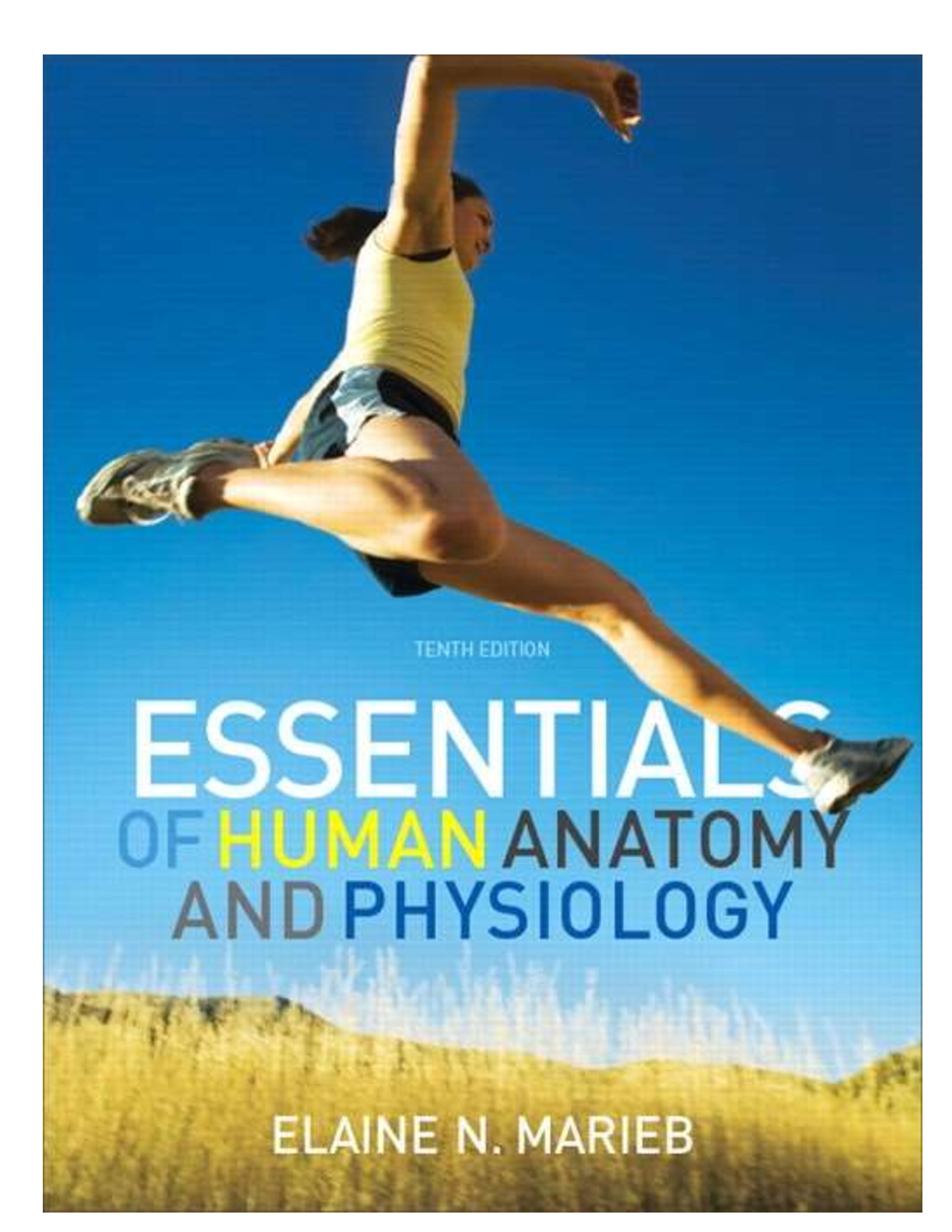
Buy this document to get the full access instantly
Instant Download Access after purchase
Buy NowInstant download
We Accept:

Reviews( 0 )
$19.00
Can't find what you want? Try our AI powered Search
Document information
Connected school, study & course
About the document
Uploaded On
Nov 19, 2021
Number of pages
383
Written in
Additional information
This document has been written for:
Uploaded
Nov 19, 2021
Downloads
0
Views
78

